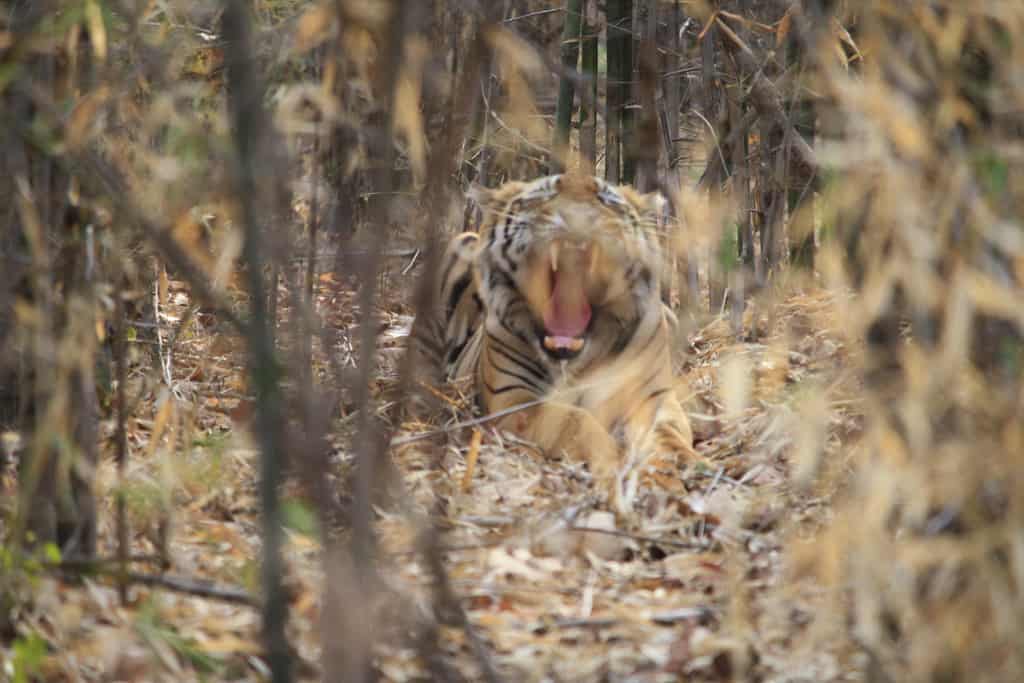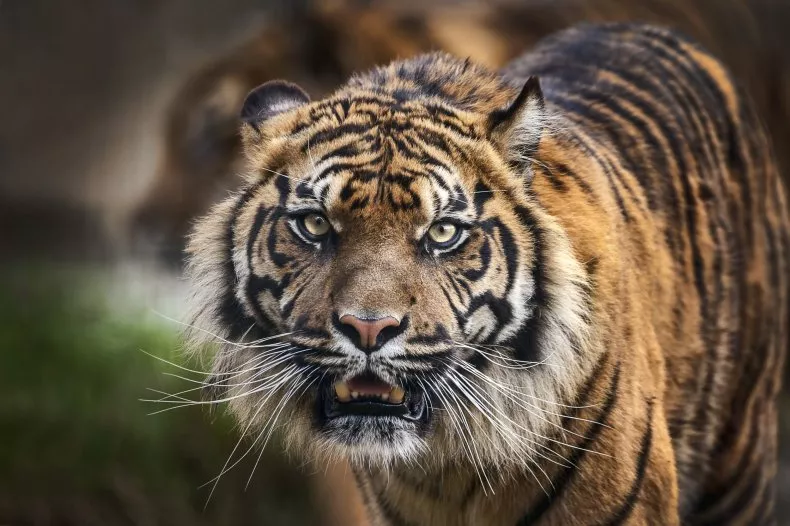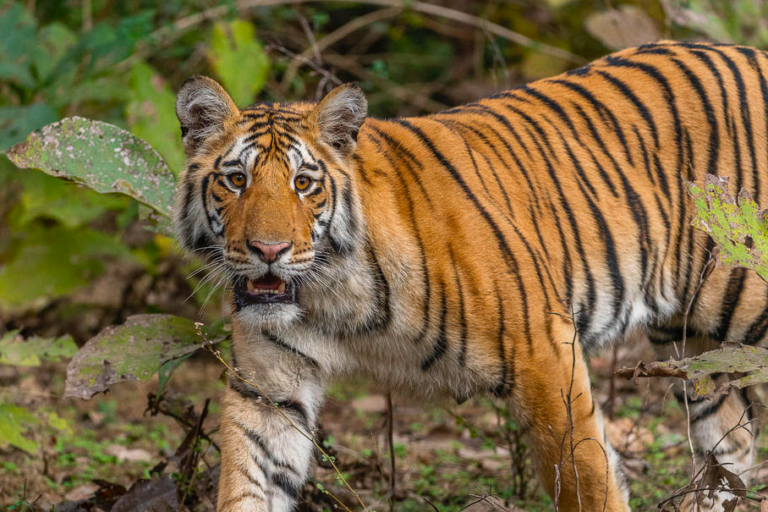The Royal Bengal Tiger, the national animal of India, also happens to be the biggest center of attraction for tourists coming to India. People from different corners of the world come here to get a taste of tiger tour to India. National parks and wildlife sanctuaries in India are a great place to fulfill this indulgence.
One of the best places for a wildlife tourist to descend happens to be Tadoba – Andhari Tiger Reserve which is situated in the Indian state of Maharashtra. Often referred to as the ‘Jewel of Vidarbha’ this wildlife sanctuary derives its name from local culture; ‘Taru’, is the name of a local deity and Andhari is a river that flows through this lush forest.
This tiger reserve has several animals like tiger, panther, jackal leopard, sloth bear, Indian Bison, barking deer, chausingha, flying squirrel and several others that makes this tiger reserve a must visit place while on tiger tours to India. But the tiger is an endangered species and even though it is widely popular, yet, it is fighting a battle of survival hence, certain measures have been taken by the government to make sure that tiger and other endangered species are well protected.
To know about the density, habitual pattern, eating habits, socio-economic impact and the number of tigers and their co-predators frolicking in the area, the state government of Maharashtra has awarded a sum of Rs. 1.64 crore to a research project.

This research project is called ‘Long-term monitoring of tigers, co-predators and prey species in Tadoba – Andhari Tiger Reserve (TATR) and adjoining landscapes’. The research would be undertaken for a period of five years and will be implemented in five areas. The five areas earmarked are: Navegaon National Park, Tadoba – Andhari Tiger Reserve, Bor and Chaprala wildlife sanctuaries and Nagzira.
The research would not only focus on demographic statistics that are vital for tiger survival and that of other co-predators but would also try to formulate an exclusive committee that would look into the cases of man-tiger conflict, another major concern of this study.
TATR is extremely crucial in the arena of man-tiger conflict as this area has seen the most cases of such conflicts. The man-animal conflict creates an environment of fear in human population and this often leads to death on both sides. It is thus an extremely important aspect of this study which is bound to have a long lasting impact on the environment and the equation between man and this awesome predator.
This study would be exhaustive and would look at several aspects including land usage, mining areas and its impact on the behavior pattern of predators and preys, livestock population, co-predator impact, infrastructure, roads and villages beside several micro issues.

Besides these measures, the researchers would also take into account the population pattern of tigers and for this they would employ methods such as capture-recapture, spatially explicit approach and distance sampling method. Scientific projects like these could turn out to be an extremely important tool in the conservation of wildlife in India.
Since the advent of Project Tiger in early 70’s, the onus of conservation has been thrust on the national parks and wildlife sanctuaries in India. Tiger tours to India have helped create awareness about this imperial animal and have created a lot of goodwill for it. But national parks or wildlife sanctuaries in India can do just that much. Though they have been successful but in a limited way, after all keeping tigers in a secure environment is not a long term option because tigers belong to the heart of wilderness.
Now, the need of the time is to device scientific methods that would help these endangered species to survive in an extremely hostile environment. And for that simply structuring more national parks or wildlife sanctuaries in India would be helpful only in a limited way thus, it is extremely important that this study turns out to be a successful exercise.
This article was written by Emily Austin for Focusingonwildlife.com
Emily Austin
Emily Austin is a passionate Environmentalist and a freelance writer. Apart for supporting Environmental Moments for improving and protecting quality of natural environment, she is interested in spreading awareness through writing about Wildlife.






Leave a Reply